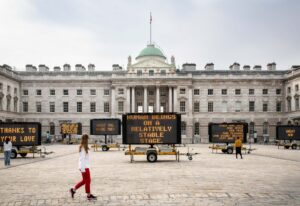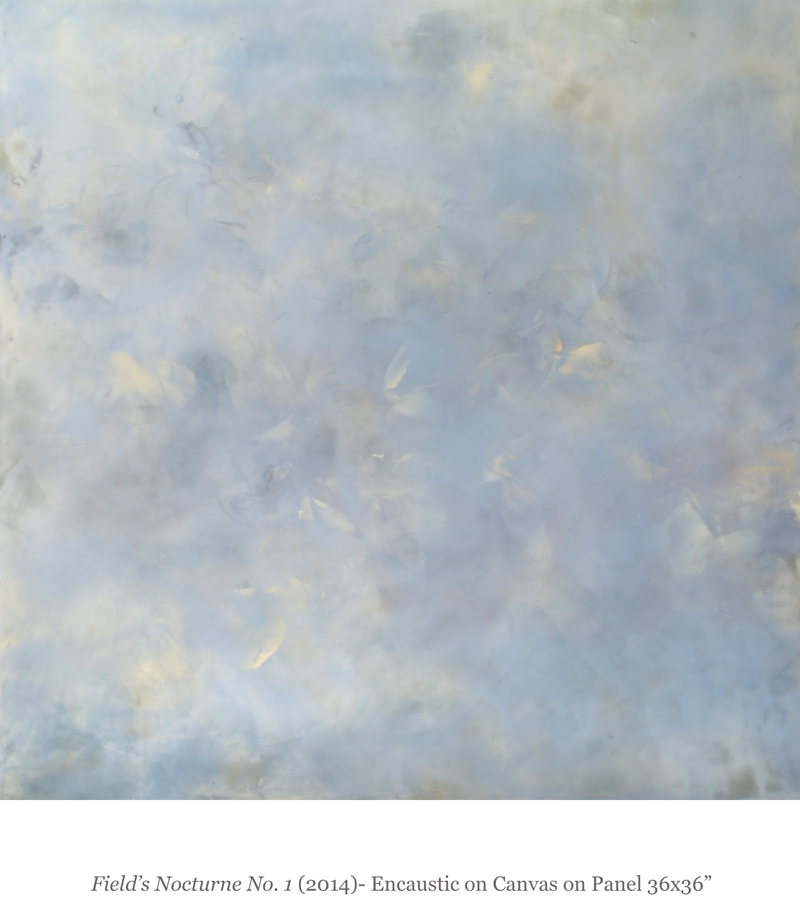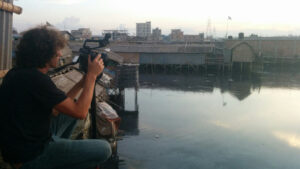
Justin Brice – Environmental Artist
Environmental artist Justin Brice encourages others to take a critical look at the relationship between humans and the planet.
MOOD OF LIVING
Born in the small coastal town of Seaside, Oregon and now spending time in Columbus, Georgia and Wheaton Island, Maine, American abstract artist, Betsy Eby, creates beautiful, kinetic artworks blossom within the sounds of music and the tempos of nature. She creates a physical, painted ethereality; as Eby puts it, she desires “to make all these intangibles tangible.”
A painter, classical pianist, and filmmaker, Betsy Eby explores the magnificent realm of the arts and the expressions of existence.
Mood of Living: Occupation?
Betsy Eby: Artist.
MoL: Occupation description?
BE: I paint paintings, play classical piano. I recently made a movie.
MoL: Before your current occupation, you were?
BE: I have always made art.
MoL: What and/or who inspired you to become an artist?
BE: I started playing piano at the age of five. My training in classical music shaped me toward a certain perfectionism and work ethic required to learn and interpret the works of composers. My parents taught me the value of working hard and seeing things through. I had a grandmother who loved beauty and felt that objects carried resonance and meaning. At a point in my life there was a convergence and I felt a need to make all these intangibles tangible. You know, that place where classical music lives, and how it rushes in, fills you then leaves you affected, and that place where nature can take your breath away. My husband who is also a painter, Bo Bartlett, is my biggest advocate and collaborator. We constantly lend ourselves to each other’s work with crits and ideas. The life we live together is a wellspring. If there was one Ah-Ha Moment where I felt called to totally commit myself to painting, it was when I was in my early twenties when I was standing in front of J.W. Turner’s “Rockets and Blue Light (Close at Hand).” It’s a large, enveloping painting that hinges between realism and gestural abstraction. It was at that moment that I knew what I was supposed to do with my life.
MoL: Where and how did you learn your craft?
BE: From endless experimentation. I recall the book Formulas for Painters by Robert Massey as being particularly helpful when I was researching the interaction of materials. After getting my BA in Art History, I took night classes from Pratt Art Center in Seattle.
MoL: What medium do you like to work in?
BE: I’ve formulated my own way of working with encaustic which is a material made of damar resin and beeswax.
MoL: How would you describe your artwork? How would you describe your creative process?
BE: My work is a form of Lyrical Abstraction that comes about from an intuitive painting process. Within that process, I’m responding to the elements within each painting, guiding them into balance.
MoL: Where do you look for inspiration?
BE: My work taps both inward and outward sources. I often joke that I’m a nineteenth-century because I love music from the late 1800s and early 1900s. I’m inspired by Rachmaninoff Preludes, Brahms Intermezzi, Dvorak, Debussy and later composers like John Cage and Alan Hovhaness. Ralph Vaughan Williams’ “The Lark Ascending” is melodic, ethereal, mysterious – all the qualities I love in music. Lately I’ve been looking at the paintings of Joan Mitchell. She was a force. I look also toward Asian landscape paintings for their restraint and rhythmic placement. For formal, compositional elements I might study the patterns in nature because they teach proportion, rhythm, line and mass. For example yesterday I was looking out across the water to the rock ledge and drawing the cracks and spaces between the boulders in a continuous line. Weekly figure drawing also helps me study natural form and proportion.
MoL: What is your favorite hobby?
BE: Classical Piano.
MoL: Do you find that there are strong connections between painting, nature, and music? If so, how do these relationships engage you as an artist? How do they awaken your senses and emotions?
BE: Within that intersection lies poetry. It’s about reduction of information, reduction of specifics in order to convey a message of the senses and feelings of motion and cadence. I respond to calligraphic gesture, organic line, the musical legato and tremolo. Although this is a baroque term, I think about the notion of “forward spinning” where ornament loops and loops propel forward without division.
MoL: It says on your personal site that with your current work, “each painting serves as a visual document to a classical music composition.” What is so magical about giving music an image, a visual quality?
BE: In the Fin de Siecle period in France, composers, artists, philosophers, and poets borrowed from one another’s disciplines and senses to create their work. Debussy wrote musical pieces titled “Images” to impart a feeling. An example is “Footsteps in the Snow” where the pianist is asked to dampen all traces of percussion and have the piano imbue the quietude of a snowfield, the soft rhythmic cadence of shoes breaking the snow. Whistler painted Nocturnes, for example “Nocturne in Blue and Silver,” nodding to a musical Nocturne written in a certain key. It is a rich world, borrowing from all senses and ascribing music to image, image to music, scent to image, and feeling to form. Today in the scientific community this would be called synesthesia. I would call it a sensual life.

MoL: What is your favorite quote?
BE: Claude Debussy was standing near a pianist who was attempting to play one of his pieces. Debussy apparently paced in dissatisfaction, stopped the pianist and said, “Dewier! Dewier!” For me that sums up the constant yearning to transcend a medium. I was working on a piece with my Russian piano instructor recently when she said, “The music is already in the universe, all you need to do is pull it down.” That’s true about art. The feelings are in the air, I just have to be a funnel, so to speak, and guide them in.
MoL: How do you achieve a peace of mind and spirit?
BE: By painting and playing the piano. I also do yoga. Peace of mind and spirit comes from a combination of being present in the moment and also keeping your eye on the horizon. I balance the Eastern philosophy of Emptiness with the Western philosophy of fullness by having enough alone time to create while also acknowledging that I live in this world where achievement is satisfying.
MoL: We find that people who make beautiful things are more likely to lead an artistic lifestyle: Do you spend much time creating a beautiful home?
BE: I am intentional about my environment and like to shape space. I keep things spare so that my surroundings are more about light and space rather than stuff.
MoL: Do you entertain?
BE: Occasionally, yes. A few months ago I hosted a classical guitar and cello trio concert in my studio. Paintings were hung all around and the musicians played a Brazilian program. And yes, we host dinners for friends. Living in the South, we’ve taken to hosting Wednesday Night Supper for the Thinking Folk.
MoL: Who is an influential figure in your life?
BE: My husband, Bo Bartlett. He is an amazing painter and has a superhuman capacity to synthesize psychology, wisdom, history and visual storytelling. He is patient and he is generous.
MoL: If you could have a conversation with any artist of the past or present, who would it be and why?
BE: I’d like to talk to Joan Mitchell or Cy Twombly. I’d talk to them about how they gathered their energy and got it in the paint. I’d ask them if they have similar concerns as I do about a painting’s tipping point between sparseness and expression, poetry and overtness. I’ve met someone recently who was Cy Twombly’s friend and confidant. He is involved in the Cy Twombly Foundation. I met him shortly after Twombly’s death and he has promised me some good stories. So in a way, I’ll be able to have a conversation with him, via a surrogate. Several years ago, my husband and I had lunch with his best friend Andrew Wyeth and Kenneth Noland. They’ve both since passed away. It was like being at the table with art history and they were telling old stories about how they curated a show at the Met together. I was influenced and inspired by the post war abstract expressionists and colorfield painters. I’d be interested in hearing about the time when art wasn’t so driven by the market.
MoL: What period of art do you most admire?
BE: While I say I was mostly influenced by the school of Abstract Expressionism, I respond to art that has soul, art that has the artists’ life energy in the paint and art that conveys feeling, irrespective of era. That being said, that expressivity must be met with some level of discernment that guides the work to cohesion.
MoL: When was the moment you realized you could really do this?
BE: That day in front of the Turner.
MoL: It says on your personal site that “painting isn’t about capturing beauty, but it is the ongoing process of finding it. The results are always shifting and the act is never static.” Why is it so important for painting to be an act of exploration, of mesmerizing inconsistency? Why is it so important to have this sense of exploration and movement within a work of art?
BE: To transcend the limits of our ego and of our imagination. We have to be comfortable with the unknown in order to wake up and get in the studio everyday. Neil deGrasse Tyson said something to the effect recently that if there is a God, you’ll find it at the frontier. I think the frontier is the cusp, no matter how big or small, of decision making, when we’re following the invisible thread to manifestation or knowledge. I think this is why I’ve met so few artists who would claim to be religious. Artists question reality and artists create work based on their individuation. We don’t operate from rigid icons or old paradigms. Artists seek the next answer. If you think about it, if all of society were to live this way we’d be on a quicker evolutionary path.
MoL: Where do you see yourself in 10 years?
BE: Continuing to paint, evolving the paintings, and expanding my repertoire of music. I might have some more film making projects in me too. I have some ideas for sculpture I’d like to fabricate someday. We never know what the future holds, but I trust I’ll be making things.
MoL: What is the message you hope to project through your artwork? What feelings do you hope to convey?
BE: Someone told me recently that my paintings invoked in them a sense of longing too deep to put their finger on. Another person told me that one of my pieces brought form to a reoccurring dream he had in his childhood. My grandmother was a deeply passionate woman who interpreted the world through superlatives. As she was nearing the end of her life, she had lost her ability to articulate fully these opinions and superlatives. A few months before her death, my mother brought her into my studio and parked her wheelchair in front of a painting I had on the wall. She began to sob. I said, “What’s wrong Nana?” She uttered, “It’s me. It’s me.” I asked, “How do you mean?” And she lifted her arms in the air and like a conductor, moving left to right in a cursive pattern with her wrists and murmured in a sing-song fashion, “Oh, you know…. Da dat da dat da dat la la…” And in her lyrical, sentimental tone, she delivered the whole thing: The feeling, the weightlessness, the need to transcend her expression beyond the world of words. It reminded me that we enter this world in the unsayable, and we leave the world in the unsayable. That’s what I want to tap. To steal from Mark Rothko: “I want to paint the place where music lives.” I want to paint that dimension.
MoL: What advice can you give to anyone interested in becoming an artist?
BE: Work hard. Push beyond. They say creation is ten percent inspiration, ninety percent perspiration. Stay focused and stay open. Be a student of life. When you stay open and say Yes, it’s in those interchanges of cross-pollination where the magic lies. I also think it’s important to develop your voice as well as your skill/craft. We are all unique in our biology and in our influences. Think about “what story do I want to live and how does my work convey it?” It’s not enough to annex yourself from the world like a purist. Feel the seasons, but be the constant. Have faith in your future self.
Photography courtesy of Betsy Eby

Environmental artist Justin Brice encourages others to take a critical look at the relationship between humans and the planet.

Internationally recognized filmmaker Andrew Morgan focuses on telling stories for a better tomorrow for various film and new media projects.

Throughout his work with Ala Plástica and Casa Río Lab, environmental activist and artist Alejandro Meitin unites social engagement, art, and sustainability.